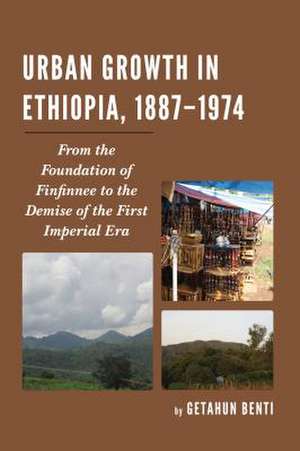URBAN GROWTH IN ETHIOPIA 1887-PB
Autor Getahun Bentien Limba Engleză Paperback – 22 mai 2019
Preț: 396.13 lei
Nou
Puncte Express: 594
Preț estimativ în valută:
75.82€ • 78.13$ • 64.01£
75.82€ • 78.13$ • 64.01£
Carte tipărită la comandă
Livrare economică 03-17 martie
Preluare comenzi: 021 569.72.76
Specificații
ISBN-13: 9781498521956
ISBN-10: 1498521959
Pagini: 232
Dimensiuni: 152 x 229 x 17 mm
Greutate: 0.35 kg
Editura: Rowman & Littlefield
ISBN-10: 1498521959
Pagini: 232
Dimensiuni: 152 x 229 x 17 mm
Greutate: 0.35 kg
Editura: Rowman & Littlefield
Notă biografică
Getahun Benti is associate professor of African history at Southern Illinois University at Carbondale.
Descriere
Combining chronological, thematic, and regional approaches, this book examines political, economic, and social developments that contributed to the rise and growth of towns in Ethiopia from 1887 to 1974. It provides a comprehensive history of the growth of Ethiopian cities during this time with an interdisciplinary approach.
